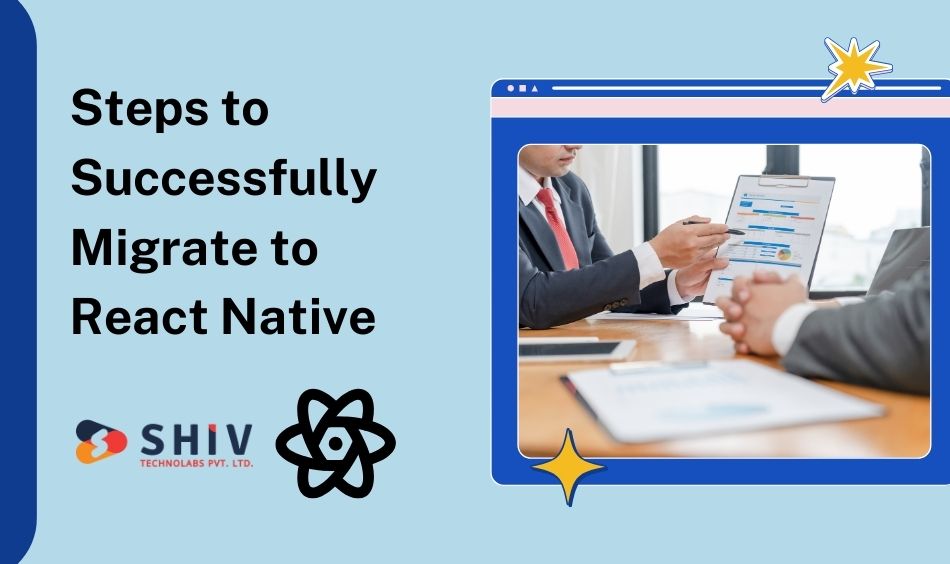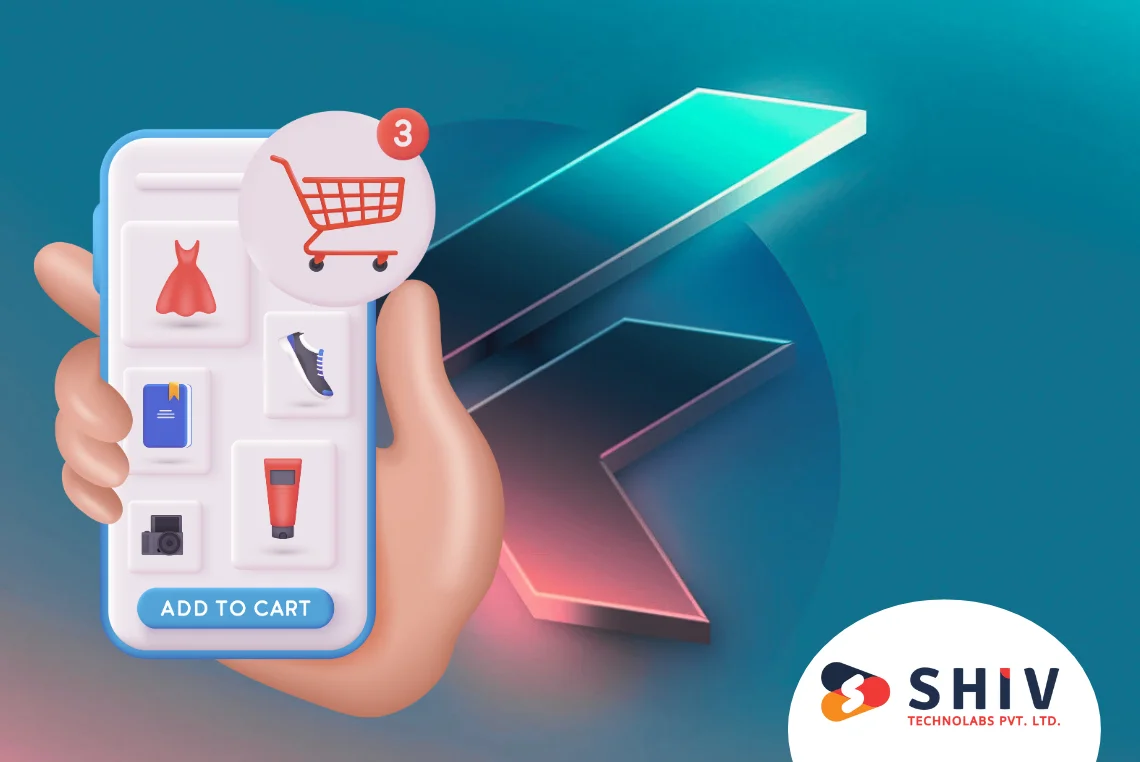Table of Contents
Migrating enterprise applications to React Native offers numerous advantages, including cost efficiency, faster development cycles, and a unified codebase. However, the migration process requires careful planning and execution to ensure success. Drawing insights from industry experts and real-world case studies, this guide provides a comprehensive overview of migrating to React Native for enterprise apps.
React Native is a popular framework that enables the development of cross-platform mobile applications using a single codebase. For enterprises with existing applications, migrating to React Native can modernize tech stacks, reduce maintenance efforts, and enhance user experiences. However, the migration process must be meticulously planned to align with business objectives and technical requirements.
Key Benefits of React Native for Enterprises

For enterprises, the advantages of React Native extend beyond cost and efficiency. Here are some key benefits:
# Cross-Platform Development
React Native enables simultaneous development for iOS, Android, and web platforms, eliminating the need for multiple development teams.
# Scalable Architecture
Its modular architecture supports scalability, making it ideal for enterprise applications that handle high volumes of users and data.
# Enhanced Productivity
Developers can use hot reloading to see changes in real time, reducing debugging time and improving overall productivity.
# Integration with Legacy Systems
React Native can seamlessly integrate with existing enterprise infrastructure, ensuring a smooth transition without disrupting operations.
# Future-Ready Framework
As an open-source framework backed by Meta (formerly Facebook), React Native continues to evolve with updates and new features, making it a future-proof choice for enterprises.
Migration Approaches: Greenfield vs. Brownfield
When migrating an existing app to React Native, choosing the right approach is crucial to ensure the migration process aligns with your business objectives, budget, and timeline. The two primary approaches to React Native migration are Greenfield and Brownfield. Each approach has distinct advantages and challenges, and the choice depends on your app’s current state and your goals for the migration.
# Greenfield Migration
A Greenfield migration involves building a new app entirely from scratch using React Native. This approach is often chosen when the existing app is outdated, has poor architecture, or if the company wants to revamp the app’s functionality and user experience completely.
Advantages of Greenfield Migration:
- Fresh Start: A Greenfield project gives developers the freedom to design and build a modern app without being constrained by legacy code or outdated architectures.
- Optimized Performance: By starting from scratch, developers can implement the latest technologies and best practices, optimizing performance for both iOS and Android platforms.
- Future-Ready Architecture: A fresh build allows for the creation of a scalable and modular architecture, making it easier to implement updates and add new features in the future.
- Unified Codebase: Developers can create a single, shared codebase for all platforms from the outset, reducing long-term development and maintenance costs.
Challenges of Greenfield Migration:
- Time-Consuming: Building an app from scratch can take significantly more time compared to reusing existing components.
- Higher Upfront Cost: The initial cost of development is higher since every feature must be built from the ground up.
- Data Migration Complexity: Migrating user data and integrating with legacy systems can be challenging and requires meticulous planning.
When to Choose Greenfield Migration:
- The existing app has major architectural flaws or performance issues.
- A complete redesign of the app’s functionality, user experience, or branding is required.
- The app needs to adopt a future-proof, scalable framework from the ground up.
- There’s sufficient budget and timeline flexibility for a full rebuild.
# Brownfield Migration
A Brownfield migration involves integrating React Native into an existing app incrementally. Instead of building a new app from scratch, developers rewrite specific components or features in React Native while retaining the rest of the app’s native codebase. This approach is ideal for apps that already have a well-functioning architecture but require modernization or cross-platform capabilities.
Advantages of Brownfield Migration:
- Lower Risk: By migrating incrementally, enterprises can test and validate React Native components in a controlled manner, minimizing the risk of disruption.
- Reduced Time and Cost: Developers can reuse existing native code and focus on converting only critical parts of the app to React Native, saving time and money.
- Phased Adoption: A phased migration allows enterprises to gradually introduce React Native while maintaining the app’s current functionality.
- Familiar User Experience: Users continue to interact with the app without significant changes during the migration process, ensuring continuity.
Challenges of Brownfield Migration:
- Complex Integration: Integrating React Native components with existing native code can be challenging, especially when dealing with legacy systems or highly customized features.
- Learning Curve: Development teams need expertise in both native development and React Native to ensure smooth integration and communication between the two environments.
- Performance Overhead: Interfacing between React Native and native components may introduce minor performance overhead if not optimized properly.
When to Choose Brownfield Migration:
- The app has a stable and functional architecture that doesn’t need a complete overhaul.
- The goal is to modernize specific features rather than rebuild the entire app.
- The business needs to minimize downtime and maintain the app’s current functionality during migration.
- Budget or time constraints make a full rebuild impractical.
# Choosing Between Greenfield and Brownfield
The decision to adopt Greenfield or Brownfield migration depends on several factors, including:
1. Project Scope and Objectives:
- If the goal is a complete app redesign or performance overhaul, Greenfield is the better choice.
- If the focus is on adding cross-platform functionality or modernizing specific features, Brownfield is more suitable.
2. Budget and Timeline:
- Greenfield migration typically requires more time and resources upfront.
- Brownfield migration is more cost-effective for incremental changes and phased adoption.
3. Current App Architecture:
- Apps with outdated or poorly designed architectures may benefit from starting fresh with Greenfield migration.
- Apps with a strong, functional foundation can adopt Brownfield migration for specific upgrades.
4. Team Expertise:
- Greenfield projects can be simpler for teams already experienced in React Native.
- Brownfield migration requires teams skilled in both native development and React Native for seamless integration.
5. Risk Tolerance:
- Enterprises willing to take the risk of a complete rebuild may prefer Greenfield migration.
- Those seeking a safer, more gradual approach can opt for Brownfield migration.
Steps to Successfully Migrate to React Native

Migrating to React Native is not just a matter of rewriting code or changing the framework—it requires careful planning, execution, and testing to ensure a seamless transition. React Native provides a unified codebase that works across both iOS and Android platforms, but migrating from a native app or another framework to React Native is a complex process that requires a structured approach. Here, we’ll dive into real, actionable steps to successfully migrate to React Native.
Step 1: Conduct a Comprehensive App Assessment
Before initiating any migration, it’s essential to conduct a thorough assessment of the existing application. This step is critical to understanding your app’s current state and determining how it aligns with React Native’s capabilities.
Actions to Take:
- Evaluate the App’s Architecture: Review the architecture, code structure, and modules of the existing app. Identify reusable components and areas that may need redesigning.
- Analyze Dependencies and Third-Party Libraries: Check the third-party libraries and dependencies currently used in your app. Some may have equivalent React Native libraries, while others may need to be replaced or refactored.
- Identify Key Features: Determine the features and functionality that should be migrated first, as well as the parts of the app that are core to the user experience.
- Evaluate the Existing Codebase: Look at how much of the existing codebase can be reused or needs to be rewritten in React Native. Assess whether the code is modular and easy to refactor.
Outcome of this Step:
- A detailed report on the app’s architecture and an inventory of components that need to be addressed during migration.
Step 2: Define the Migration Strategy (Greenfield vs. Brownfield)
Once you understand the current state of the app, it’s time to decide which migration approach to select—Greenfield vs Brownfield. This decision will depend on your business goals, timeline, and the complexity of your app.
Actions to Take:
- Greenfield Migration: If your app has an outdated or complex architecture, it may be worth starting from scratch with React Native. In this case, you’ll need to design a new app with a clean, modular architecture.
- Brownfield Migration: If the current app works well but requires cross-platform functionality, consider an incremental migration. Begin by migrating individual components to React Native, integrating them with the existing app, and ensuring smooth communication between React Native and native code.
Outcome of this Step:
- A clear roadmap and plan outlining the chosen migration strategy, with phases for both development and testing.
Step 3: Build the React Native Environment
Once the migration strategy is clear, the next step is setting up the development environment. The tools, frameworks, and libraries you choose during this step will have a significant impact on the speed and quality of migration.
Actions to Take:
- Set Up React Native: Install and configure React Native’s environment, including Node.js, NPM/Yarn, Android Studio, and Xcode (for iOS). Ensure that your development team has the appropriate setup for both iOS and Android.
- Set Up a Version Control System: Use Git to ensure that code changes are tracked and that the migration can be done incrementally.
- Choose Libraries and Dependencies: Select the libraries and components that will be used within React Native, such as navigation, state management (Redux or React Context), and styling libraries (e.g., styled-components).
- Prepare the Testing Environment: Set up tools for unit testing, integration testing, and end-to-end testing (e.g., Jest, Detox, or Appium). Testing at each stage of the migration will help ensure app stability.
Outcome of this Step:
- A fully prepared and configured development environment for React Native, ready for development.
Step 4: Start with Core Components (Modular Approach)
Now, the real migration work begins. Begin by migrating the core components of the app, which include the most frequently used features, screens, and logic.
Actions to Take:
- Select Key Features to Migrate: Prioritize core features that provide essential functionality to the app. This can include user login screens, profile management, or critical services that the app relies on.
- Migrate UI Components: Start migrating UI components to React Native using reusable components. Ensure that the UI is consistent across both Android and iOS.
- Integrate with Existing Native Code: If you’re following a Brownfield approach, integrate React Native components with the existing native code gradually. Use tools like React Native Bridge to communicate between native and React Native components.
Outcome of this Step:
- Core features migrated to React Native, with native modules integrated where necessary.
Step 5: Implement and Test React Native Features
As you continue migrating, it’s important to implement and test React Native features. Focus on performance, user experience, and compatibility between both platforms.
Actions to Take:
- Ensure Cross-Platform Consistency: While React Native allows you to share code, some features might need platform-specific code to achieve the desired user experience. Ensure that your app looks and functions identically on both Android and iOS.
- Optimize Performance: Use React Native’s tools (e.g., React DevTools, Flipper) to monitor app performance, identify bottlenecks, and optimize performance for smoother animations, faster loading times, and reduced battery consumption.
- Integrate Third-Party Services: Incorporate third-party services like push notifications, analytics, or payment gateways that you had in the original app. Make sure they work seamlessly with React Native.
- Testing and Bug Fixes: Perform unit testing, integration testing, and user acceptance testing. React Native’s hot-reloading feature allows developers to make changes and test them in real time, speeding up the process.
Outcome of this Step:
- React Native components are fully functional, and the app’s performance is optimized for both platforms. Testing confirms the app’s readiness for deployment.
Step 6: Handle Data Migration and Syncing
Migrating user data, especially if it’s stored locally or in legacy systems, requires careful planning. Data consistency across platforms must be maintained.
Actions to Take:
- Migrate Local Data: Ensure that any locally stored data (such as user preferences, offline data, etc.) is properly migrated and synced with React Native. Use libraries like Redux Persist to manage app state and local storage.
- Sync with Backend: If your app relies on backend APIs, ensure that React Native components are integrated seamlessly with these APIs. Handle issues like API versioning and authentication appropriately.
- Test Data Integrity: Verify that data is correctly handled and synchronized, especially when transitioning between the old and new systems.
Outcome of this Step:
- Data migration and syncing issues are resolved, and data integrity is maintained across all platforms.
Step 7: Launch and Monitor
After completing migration and testing, it’s time to launch the React Native app to production. However, migration is not truly complete until the app is in the hands of real users.
Actions to Take:
- Beta Testing: Launch the app in beta to a limited audience, gathering feedback on user experience and app stability. Use crash reporting tools like Sentry or Firebase Crashlytics to monitor any issues in real time.
- Deploy to App Stores: Once beta testing is successful, deploy the app to the Google Play Store and Apple App Store.
- Monitor App Performance: After launch, continuously monitor app performance, fix bugs, and ensure that updates are deployed regularly to keep the app functioning smoothly.
Outcome of this Step:
- The app is live, and ongoing monitoring ensures that any post-launch issues are swiftly addressed.
Step 8: Ongoing Maintenance and Optimization
Migration doesn’t end after launch. It’s important to continue maintaining and optimizing the app post-migration to ensure long-term success.
Actions to Take:
- Implement New Features: Continue adding new features and optimizations to keep the app competitive and relevant.
- Ensure Compatibility with OS Updates: Regularly update your React Native app to stay compatible with the latest iOS and Android versions.
- User Feedback: Collect user feedback to understand pain points and areas for improvement, using this data to refine the app’s functionality.
Outcome of this Step:
- The app remains optimized, bug-free, and up-to-date with new features and platform requirements.
How Shiv Technolabs Can Assist?
As a leading React Native development company in Turkey, Shiv Technolabs offers specialized expertise in React Native migration to help enterprises seamlessly transition their applications. Our team is skilled in managing both Greenfield and Brownfield migration approaches, ensuring your app retains its functionality while gaining the benefits of React Native’s cross-platform capabilities.
# Why Choose Shiv Technolabs?
- Tailored Migration Strategies: We craft customized migration plans based on your app’s specific requirements, ensuring a smooth and efficient transition.
- Expert Team: Our developers are proficient in React Native, native development, and integrating advanced tools and libraries, ensuring seamless compatibility.
- End-to-End Services: From initial assessment to post-migration support, we provide comprehensive React Native development services that address every aspect of the migration process.
- Performance Optimization: Post-migration, we optimize your app to deliver near-native performance, ensuring user satisfaction and engagement.
- Ongoing Support: We offer maintenance services to address any issues and keep your app updated with the latest features and improvements.
# Our Approach to Migration:
1. Evaluation: We assess your current app architecture to identify areas for optimization and ensure compatibility with React Native.
2. Incremental Migration: Using a phased approach, we migrate components gradually to minimize downtime and maintain app stability.
3. Custom Solutions: We build and integrate custom modules for features that require native functionality.
4. Quality Assurance: Rigorous testing ensures your app is bug-free, high-performing, and ready for deployment.
5. Post-Migration Monitoring: We monitor your app post-launch to identify and resolve any issues, ensuring a seamless user experience.
Conclusion
Migrating to React Native is a strategic decision for enterprises aiming to modernize their apps, reduce costs, and enhance user experience. With benefits like cross-platform development, high performance, and a robust ecosystem, React Native is a powerful framework for building scalable and efficient enterprise applications.
However, successful migration requires careful planning, technical expertise, and adherence to best practices. At Shiv Technolabs, we specialize in React Native development services, offering tailored solutions that ensure a smooth transition. Whether you’re migrating from React or another framework, our team of experts is here to guide you every step of the way.
Embrace the future of app development with React Native and unlock new opportunities for growth and innovation. Get in touch with Shiv Technolabs, your trusted React Native development company in Turkey, to start your migration journey today!




















